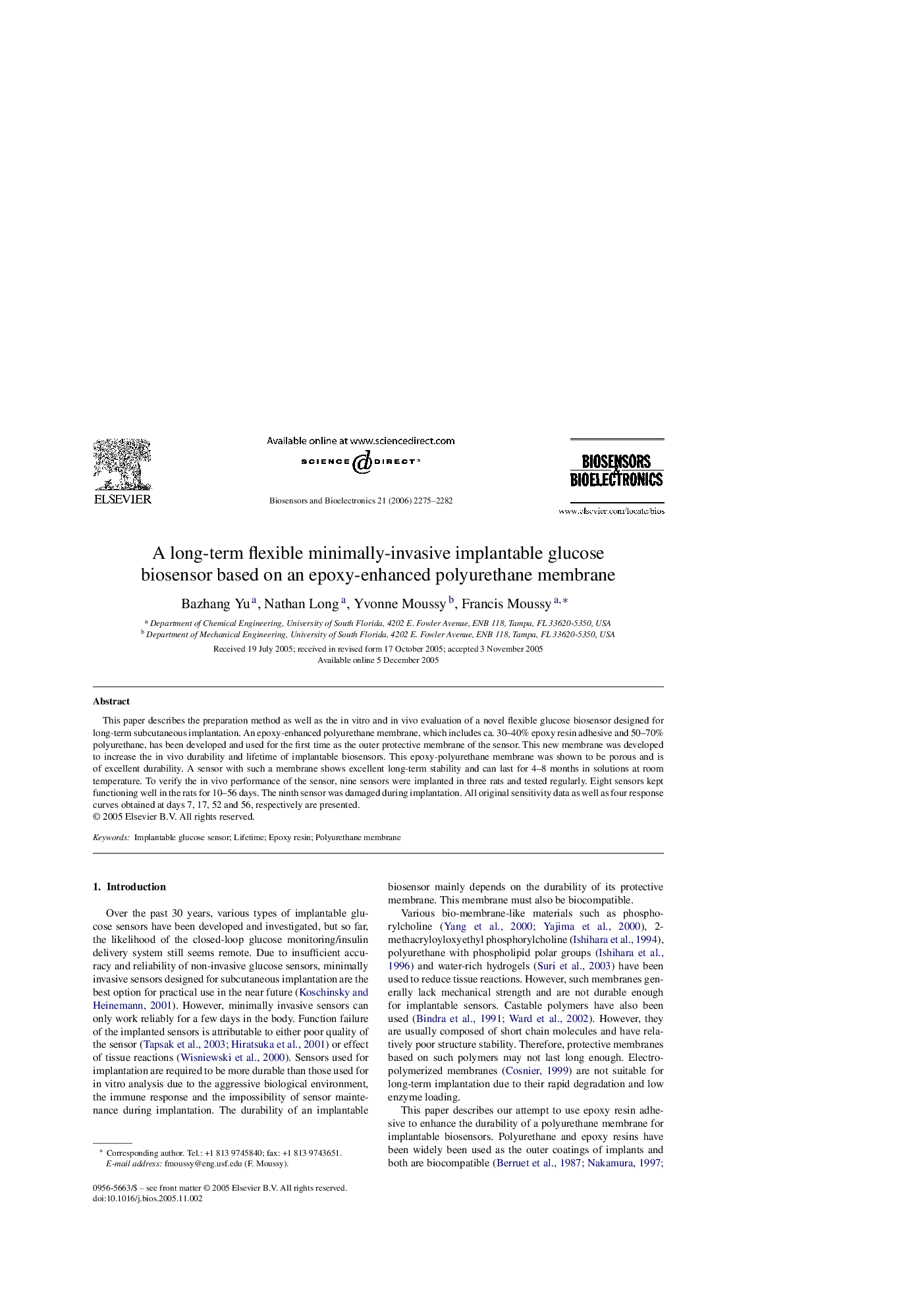| Article ID | Journal | Published Year | Pages | File Type |
|---|---|---|---|---|
| 870153 | Biosensors and Bioelectronics | 2006 | 8 Pages |
This paper describes the preparation method as well as the in vitro and in vivo evaluation of a novel flexible glucose biosensor designed for long-term subcutaneous implantation. An epoxy-enhanced polyurethane membrane, which includes ca. 30–40% epoxy resin adhesive and 50–70% polyurethane, has been developed and used for the first time as the outer protective membrane of the sensor. This new membrane was developed to increase the in vivo durability and lifetime of implantable biosensors. This epoxy-polyurethane membrane was shown to be porous and is of excellent durability. A sensor with such a membrane shows excellent long-term stability and can last for 4–8 months in solutions at room temperature. To verify the in vivo performance of the sensor, nine sensors were implanted in three rats and tested regularly. Eight sensors kept functioning well in the rats for 10–56 days. The ninth sensor was damaged during implantation. All original sensitivity data as well as four response curves obtained at days 7, 17, 52 and 56, respectively are presented.
